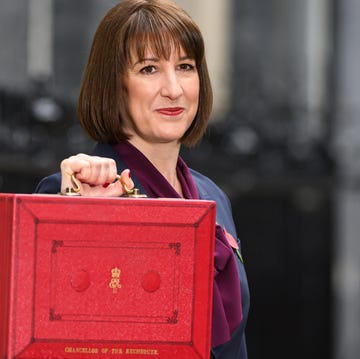It is more than a decade since auto-enrolment into a workplace pension was introduced, meaning that millions more employed workers are taking advantage of a company pension. However, the situation is very different for self-employed people who have to be rather more proactive in setting up a pension for themselves.
The pressure of work plus the constant squeeze on finances means that starting a pension might fall to the bottom of the pile of priorities, leaving self-employed people lagging behind when it comes to providing for a comfortable retirement. While the self-employed do not benefit from an employer contribution into their pension pot, they can still benefit from a Government tax incentive, so paying into a pension still has significant benefits.
Worryingly, three quarters (76%) of self-employed workers are paying nothing into a pension, according to the latest Great British Retirement Survey by interactive investor, and 44% don’t have a pension at all, leading the report to warn of a 'self-employed pension crisis'.
The report found that self-employed workers expect their income to come from different sources in retirement to employees, with only 18% expecting income from a workplace pension compared to 55% of employees.
Self-employed workers also expect higher levels of income in retirement from a range of other sources than employees do. Of those surveyed, 35% expect to get income in retirement from savings, 22% from a private pension or SIPP, 20% from property, 15% from inheritance, 11% from other investments and 10% from family support.
The good news is that self-employed people can get a 25% top up on cash that they save into a pension from the Government, and company directors can also pay into their pension directly from their business tax-free. Money paid into a pension as a company director also reduces your tax liability as once it's in your pension, it's not classed as part of your company profits (which are taxed at 25% by company corporation tax).
If you’re self-employed, it can be easy to put saving for a pension at the bottom of your long to-do list. But by putting it off indefinitely, you will have less time to save and for those savings to grow.
And even if you plan to work for as long as possible, unexpected circumstances, such as ill-health, could force you into retirement sooner than expected, so it’s important to build a safety net.
The self-employed pensions gender gap
The gender wealth gap is a stark reality for many professional women, particularly those who are self-employed, notes Alex Loydon, director of engagement and consultancy at wealth manager St. James’s Place.
"In the UK, self-employed women are retiring with an average of £136,000 less in their pension pot than men, according to the Great British Retirement Survey," she says. "This troubling disparity not only highlights the challenges faced by women in securing their financial futures but also underscores the systemic issues that perpetuate the retirement crisis among professional females."
Because they earn less on average throughout their careers thanks to the gender pay gap, often juggling the responsibilities of children and parents, and living longer, women's pension are often not enough to cover their needs in later life.
"With less money saved for retirement, self-employed women face the risk of financial instability in their later years," says Alex. "This insecurity can lead to difficulties affording essential expenses such as healthcare, housing, and other daily living costs." Additionally, women may be forced to work longer or rely on family members for support, placing further strain on relationships and well-being.
The good news is that it doesn’t matter how irregular your income is or how much you earn, there are plenty of ways to get started. Here's our top tips on how to get started on your pension journey:
1. Find the right pension for you
The first step in securing your financial future is to find the pension plan that best suits your needs. This may involve researching different pension providers and evaluating the fees, investment options, and potential returns they offer. Consider speaking with a financial advisor to help you find the most suitable plan and to ensure you are making informed decisions about your retirement savings.
Find an independent financial adviser at unbiased or vouchedfor – your initial consultation is normally free. Also take a look at MoneyHelper or The Money and Pensions Service for guidance.
Types of pensions
You can set up your own personal pension easily with an investment or insurance company. There are three main types: A standard personal pension, a stakeholder pension or a self-invested personal pension (SIPP).
SIPPs offer far more investment choices than a stakeholder pension and you have control over how your pension is invested.
If you want to keep it simple and do not want to pick investment funds yourself, take a look at stakeholder pensions, which you can get via banks, investment companies and insurance firms.
NEST Pensions
If you’re self-employed, or the sole director of a company that doesn’t employ anyone else, you can join NEST – a low cost pension scheme run by the government.
NEST requires you to put in a minimum of £10 every time you contribute, but you can contribute whenever you want. NEST works if you want flexibility and want to keep costs low, although you will have to pick from a set number of investment options.
You can usually pay in whenever you want or a fixed amount each month. Your money will be invested into a default fund suited to your age and you will be charged a fixed fee. The fees are made up of two parts:
- a contribution charge of 1.8% on each new contribution into your pot
- an annual management charge (AMC) of 0.3% on the total value of your pot each year
So if you paid £1,000 into your pot over the year, your contribution charge would be £18. If your pot was then worth £10,000, you’d pay an AMC of £30. The total charge would come to £48. That’s just under 0.5% of the total value of the retirement pot.
Pensionbee and Penfold pensions
There are a number of providers like PensionBee, Penfold, and Raindrop that provide ready-made pension portfolios for the self employed.
These digital providers make it easy to set up a pension and are designed for those who are self-employed so come with flexibility over how much you pay in and when. Fees are also usually low at around 1% or less.
Other digital providers, like Nutmeg and Wealthify also provide easy-to-set-up pensions; you answer questions about your attitude to risk and they will suggest a portfolio for you to invest in. However, you may have to contribute a minimum amount each month, such as £50 a month, into your pension if you choose these platforms.
2. Start contributing to your pension
Once you have chosen a pension plan, it's essential to understand how to make regular contributions. This may include setting up automatic transfers from your bank account or establishing a schedule for manual contributions. Make sure to stay consistent and increase your contributions as your income allows. Some pensions are more flexible than others and allow you to pay in a lump sum as and when you can, which might better suit people whose income varies from month to month.
3. Understand pension investment contributions
To maximise your retirement savings, you need to understand how your pension funds are being invested. Familiarise yourself with the investment options available within your pension plan and assess the risk and potential returns associated with each. Diversify your investments to protect your savings from market fluctuations. Most personal pensions will allow you to choose between a range of investment funds, including those in a particular region, e.g. just UK companies or worldwide, or in a mix of assets, e.g. shares and bonds.
Depending on your attitude to risk, and your age, you can opt for a certain investment style, e.g. risky or more cautious. Either way, spreading the risk between different funds and different assets protects you if there is a huge change in a particular sector.
4. Explore other retirement options
In addition to your pension, consider other retirement savings options such as a Lifetime ISA (LISA) if you are under 40, or an Individual Savings Account (ISA). These accounts can provide tax-efficient ways to save for your future and supplement your pension savings.
5. Make National Insurance contributions
As a self-employed individual, it's crucial to ensure you are making the appropriate National Insurance (NI) contributions. These contributions can affect your eligibility for certain state benefits, including the State Pension. Staying up to date with your NI payments can help you secure your retirement.
6. Consolidate previous pension plans
If you have previously been employed and paid into a pension plan, make sure you have a record of all the pensions you have contributed to. Consider consolidating these pensions to simplify your finances and have a clearer picture of your retirement savings.
7. Make provisions for your family
Secure your family's future by investing in life cover or establishing a security pot for your dependents and spouse. This financial safety net can provide peace of mind and protection for your loved ones in case of unforeseen circumstances.
















